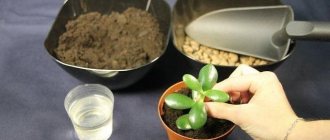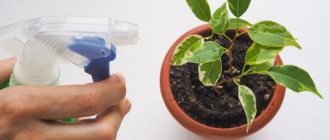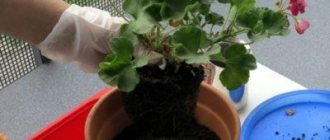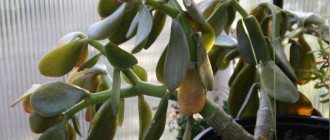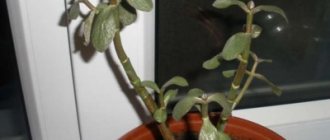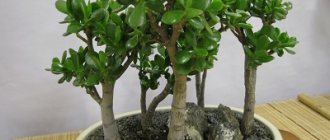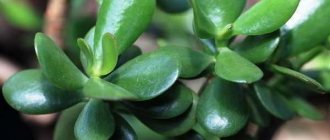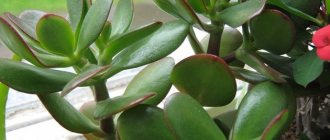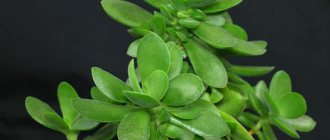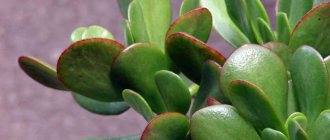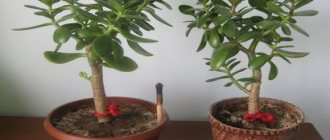Since pests spread very quickly at home, all crops need to be inspected periodically in order to detect the problem in time. Diseases of indoor flowers require immediate treatment, since in a confined space the disease spreads quickly and can affect all crops in the house. Diseases can be caused by viruses, fungi and bacteria, and if pests appear, they can always be removed manually and measures taken to prevent the spread of insects. Preventive measures include isolating the affected plant and monthly treating all potted crops with special solutions.
From the article you will learn which diseases and pests are most often found on indoor flowers and learn to recognize them by their characteristic symptoms. In addition, we will provide useful information on the effective treatment of diseases and the most popular methods of pest control.
- Causes
- Causes
- Causes
- Causes
- Causes
Types of diseases of indoor plants
Indoor flower crops are susceptible to various diseases. For example, a white velvety coating may appear on the leaves or buds. This is a disease called powdery mildew, which is caused by a special type of fungus. The development of the disease is promoted by stagnation of water, a sharp decrease in temperature and irregular watering. The affected leaves need to be removed, the temperature and watering regime adjusted, and the crop itself should be treated with a fungicide (three times with an interval of 10 days).
The most common diseases include (Figure 1):
- Mycosis (gray rot) causes the formation of mold, after which the leaves simply rot. The disease appears when there is an increased level of humidity, too dense housing and insufficient ventilation. You can fight mycosis with fungicides only if the lesions are small. But most often the flowerpot is simply thrown away.
- If the leaves are covered with black soot , which quickly forms a crust, this means that the crop is damaged by black. Plaque does not directly harm, but spoils its appearance and interferes with photosynthesis. There is no point in fighting plaque with fungicides. The only way to eliminate it is to regularly wipe the leaves or rinse them in the shower. You can use a weak alcohol solution or beer.
- Late blight is also caused by fungi. Stems and leaves become covered with purple-brown spots, wither and gradually die. The disease can be provoked by too intense watering or a dense substrate. It is useless to fight late blight, and the affected specimen is simply thrown away along with the substrate. To prevent the appearance of the disease, flowerpots should be planted only in a specially prepared soil mixture, and in winter the room should be regularly ventilated.
Sometimes nearby leaves begin to wilt and turn brown. This process is caused by a special fungal disease, which is practically useless to fight. The affected flower should be thrown away as quickly as possible so that the fungus does not spread to neighboring crops.
Figure 1. Common diseases of indoor plants: 1 - powdery mildew, 2 - gray rot, 3 - black soot, 4 - late blight
Another sign of the disease is cinnamon or black spots on the leaves. It could be scab, cercospora blight or anthracnose. As is correct, regular spraying with fungicides helps, but if the leaf tissue begins to die, all damaged parts will have to be removed. Bordeaux mixture is considered the most effective remedy, which can be used not only for medicinal but also for preventive purposes.
Viral
Some crops are affected by viruses. Leaves begin to discolor or become misshapen. There is no effective method of control, so the diseased flower must be destroyed so that it does not infect other crops.
The most common viral diseases of indoor flowers include (Figure 2):
- Mosaic - leaves are covered with spots of different colors and shapes, which form a bizarre pattern. In this case, the mosaic does not cause serious harm, but it can spoil the appearance.
- Jaundice is a dangerous viral disease, as the affected crop quickly begins to wither, wither, stop growing and die. Treatment for jaundice has not yet been developed, so it is better to destroy the infected flower immediately.
Figure 2. Signs of viral damage
There are also varieties that are not susceptible to diseases at all. These include aspidistra, caladium, cyperus and many others. Examples of such crops are shown in Figure 3.
From the video you will learn how to properly deal with the most common diseases of indoor plants.
Bacterial
Bacterial diseases also pose a danger to home crops, as they not only slow down the growth of the plant, but also spoil its appearance. There are several types of diseases in this group.
Figure 3. Examples of disease-resistant crops: 1 - aspidistra, 2 - caladium, 3 - cyperus
The most common bacterial diseases are considered (Figure 4):
- Rot especially often affects varieties with fleshy leaves and stems. Provoking factors may be high humidity and excessive use of nitrogenous fertilizers.
- Wilting first affects the stems, gradually switching to the leaves.
- Spotting is manifested by the formation of dead areas on the leaves. Unlike fungal spots, bacterial spots have clear contours.
- Bacterial cancer provokes the formation of growths on roots and young shoots. As the disease spreads, the culture weakens and gradually dies.
Figure 4. Bacterial diseases of indoor flowers: 1 - rot, 2 - wilting, 3 - spotting, 4 - bacterial cancer
To combat bacterial diseases, there is no point in using chemicals, since they are not sufficiently effective. In case of severe damage, the plant is destroyed along with the soil and pot, but it is much more effective to take preventive measures and use fertilizers sparingly.
Spots caused by infection
The fat woman periodically encounters various infections. Their appearance can also be caused by improper watering, excess nitrogen fertilizers and infection from other plants. Externally, the trouble manifests itself primarily on the leaves.
Dried brown
Large brown dry spots appeared on individual leaf blades on one side. The cause is most often not an infection. Everything is much simpler - normal watering is not organized (once a week).
One missed watering, a second and... dry leaves are guaranteed. This plant simply dries up. It's easy to fix the situation. Start feeding the money tree with moisture on time.
Brown “crusts” can also be a sign of sudden temperature changes. The fat woman doesn't like them very much. Assess the situation. If the plant is on a windowsill, then a sharp decrease/increase in air temperature outside can affect the health of the tree.
Don't forget about indoor humidity. High - will lead to rotting, excessive dryness - to the appearance of dry spots and subsequent death of the leaves.
A frequent occurrence of marks is mechanical damage to leaf plates by animals. Scratches from claws and teeth scar, forming characteristic brown, dry streaks.
Black
Black spots in the middle of a Crassula leaf may also not be a symptom of a disease, but a consequence of exposure to direct sunlight. The plant gets burned and its tissue turns black. Then such foliage falls off.
What to do:
- If the stains are isolated and the general appearance of the tree is normal, then simply remove it away from the heat and sun. Crassula loves diffused light and moderate watering. There is no need to create desert conditions for him.
- It is worse when there is rot of the leaves, trunk or stems. This may be a consequence of the plant being flooded with water or infected with a fungus. If you “overdid it” with moisture, let the fat plant dry and remove all rotten leaves. In the future, do not violate the care regimen.
When rot appears, considerable efforts will have to be made to save the plant:
- First, wash the tree with soapy water, check the roots and remove all damaged/rotten parts.
- Then treat with fungicidal preparations (Topaz, Fundazol, etc.). Then repot the plant in new soil and pot. Rinse the container with soapy water first.
- To make the plant recover faster, soak the cut areas in potassium permanganate or treat them with charcoal. This will help protect the money tree from re-infestation.
Redheads
Red spots on leaves are a serious cause for concern. Do not confuse them with normal changes in foliage caused by the sun. Red spots look like rust and indicate a bacterial infection.
Wash the plant thoroughly or wipe with a damp cloth. Remove everything that is rotten. Treat with a fungicide solution. The drug Fitosporin-M helps well.
Red mites can leave rusty marks. You can get rid of it using acaricides.
White
White spots that resemble spray paint indicate that the plant has received excess water. The money tree releases excess through its leaves.
This is not a dangerous phenomenon and does not indicate an infection. Let the plant dry out and do not overwater it again.
Gray
Do not confuse the appearance of gray spots with powdery mildew, which completely covers the leaves with a thick gray coating. Gray spots do not appear on the entire sheet.
They are often accompanied by softness of the leaf blades and a characteristic fluff. The cause is a fungal disease - gray rot. Perhaps the watering was very active and the plant was waterlogged.
- Carry out rescue measures:
- Let the fat plant dry out and change the watering system.
- Remove all affected leaves and treat the tree with a swab dipped in a solution of any broad-spectrum fungicide (Skor, etc.). Copper sulfate and Bordeaux mixture will also help.
Soft brown
Brown spots that look like bumps are not an infection. Most often, these are symptoms of a plant being infected by a pest called scale insects. If you do not get rid of the scourge in time, the plant may die.
To fight:
- Wash the plant or remove all pests by hand.
- Then spray the trunk and foliage with insecticides.
- It is also advisable to transplant the tree into another soil to minimize the risk of recurrence.
Powdery mildew on indoor plants: treatment
Powdery mildew can appear not only on open ground crops, but also on indoor plants. The causative agent of the disease is a special type of fungus that forms mycelium on leaves and stems.
Powdery mildew requires treatment after the first symptoms are detected, because the uncontrolled development of the fungus will lead to the fact that the crop will begin to weaken, slow down growth and may even die.
Causes
The causes of powdery mildew are very diverse. But most often this disease is caused by high humidity and temperature. In addition, the disease can be caused by improper care and exposure to pests. For example, if a plant is weakened after an attack by insects or mites, it becomes more susceptible to fungi.
Figure 5. Symptoms of powdery mildew on indoor flowers
The onset of the disease can be triggered by excessive fertilizing with nitrogenous fertilizers and low calcium content in the soil. In addition, the disease can also appear if drops of water remain on the leaves and stems for a long time after watering.
Symptoms
A characteristic symptom of powdery mildew is the formation of a dense white coating on the leaves and stems. This plaque contains fungal spores, but is easily cleaned off by hand (Figure 5).
Black spots on tree bark
The saddest thing that can happen to fruit trees in the garden is the appearance of black spots on the trunk or skeletal branches. At first they are small in size (up to 1 cm in diameter), slightly concave and have a purple tint. Then they gradually grow, affecting an increasingly larger area. Such a symptom indicates a disease with black cancer (Anton's fire, fireweed).
At the site of the lesion, the bark first turns black, then the disease penetrates into the deeper layers. The bark begins to crack and come off in rags. The branches or trunk die, leaving wounds on the tree. At this stage, both the leaves and the fruits, if any, turn black.
Although black cancer is believed to be a disease of weakened trees, the fungus can affect any plant in the garden. There are cases when a tree itself healed wounds from Antonov’s fire, but there are very few of them, so you shouldn’t hope for a miracle.
At the first signs of the appearance of black cancer on a tree, you need to immediately begin treatment.
- Strip the affected areas with a knife to reveal healthy wood.
- Disinfect the wound with a 5% solution of iron sulfate.
- Coat the cut with RanNet paste or garden varnish.
- At intervals of a month, treat the tree twice with 1% Bordeaux mixture.
Houseplant diseases: sticky leaves
Under normal conditions, the leaves of indoor plants are smooth and dry. But if they are covered with a sticky coating, this indicates a pathology that requires immediate treatment (Figure 6).
Among all the diseases of domestic flowers, sticky leaves cause the gardener the most trouble, because this coating not only spoils the appearance of the flower, but also worsens its general condition. Let's try to figure out what causes a sticky coating and how to properly eliminate it.
Causes
The main reason for the appearance of sticky plaque is the influence of pests, which may not be visible to the naked eye, but at the same time they feed on the juices of the flower and weaken it.
Sticky leaves appear if scale insects or false scale insects, aphids, mites or whiteflies have settled on the crop. All these insects cover the leaves with their waste products, which form an unpleasant sticky coating.
Symptoms
It is very easy to determine the presence of sticky plaque - just touch the leaves. Do not underestimate the problem, because a plant whose leaves are covered with sticky waste products of pests quickly loses moisture and nutrients and becomes more susceptible to fungal and viral diseases. In addition, sticky substances clog the pores in the leaves, and the flower cannot breathe normally.
Figure 6. Sticky leaves of indoor flowers and methods for eliminating pathology
If measures to eliminate plaque are not taken in time, the flower will quickly wither, stop growing, and may even die if this flower has previously suffered a disease or transplantation.
Treatment
Since the main factor causing the formation of plaque on leaves is pests, it is necessary to take measures to combat insects. First, you need to treat the flower with insecticides or acaricides (if mites were found on the stems). The culture itself must be thoroughly washed with a solution of laundry soap, carefully but carefully washing off plaque from each leaf.
If the plaque has already spread throughout the culture, folk methods of control will not be enough. In this case, it is better to rinse the leaves with clean water and treat the crop with Fitoverm, dissolving the contents of one ampoule in water.
Houseplant diseases: dry leaf tips
If the tips of the leaves of the flowerpot begin to dry, most likely the air in the room is too dry or the crop is not properly cared for (Figure 7).
In fact, there are quite a few reasons for the appearance of dry tips on leaves, so you need to objectively evaluate all the factors and take appropriate measures to eliminate the pathology.
Causes
As mentioned above, dry leaf tips appear when there is low humidity in the room. But this is far from the only reason.
Among the factors that can cause drying of leaves at the tips are::
- Watering with hard tap water;
- Violation of the watering schedule: excessive moisture or drying out of the earthen clod;
- Increased or decreased content of fertilizers in the soil;
- Increased room temperature or exposure to direct sunlight;
- A tight pot in which the roots have completely encircled the soil and formed a dense earthen ball.
In addition, dry leaf tips can appear when exposed to pests. To eliminate the problem, you need to assess the degree of influence of all factors that could lead to pathology and take appropriate measures to eliminate them.
Symptoms
At the initial stage, only a small part of the tip of the leaf begins to dry out. It is at this stage that you need to inspect the plant for the presence of pests and review the crop care schedule.
Figure 7. Diseases of indoor plants: dry leaf tips
For example, if aphids appear on a flower, you may notice colonies of small insects on the stems or lower parts of the leaves. If mites have settled on a flower, a small cobweb will appear between the nodes, and when scale insects attack the leaves, you can notice small, dense and motionless insects.
Treatment
If the tips of the leaves begin to dry out under the influence of pests, you need to treat them with chemicals, and after a few days repeat the procedure to eliminate the young individuals that have hatched from the larvae.
But much more often, the tips of the leaves dry out due to improper care. First of all, you need to improve the quality of water for irrigation. For this purpose, it is better to use melt or rain water, but if you do not have such an opportunity, you can use regular tap water. In addition, you need to increase the humidity in the room by spraying the leaves with boiled water at room temperature or installing a stationary humidifier nearby.
Reasons for appearance
A healthy money tree is a stable trunk with a green, lush crown. Sometimes the leaves darken a little when exposed to the sun. But the color of the foliage still remains glossy and rich.
But it also happens that brown or black spots suddenly begin to appear on fresh greenery, or the leaf becomes dry and curls. The reasons are improper plant care, bacterial or fungal diseases.
Main care mistakes:
- over- or under-watering;
- placing the pot with the plant in direct sunlight;
- increased humidity in the room;
- mechanical damage to leaves (pets, children);
- lack of light, heat from the battery, etc.
The patches may be dry or sticky. They may resemble a silver coating or look like a gray coating. Such damage indicates an invasion of pests - mealybugs or spider mites. Brown spots that look like rust are a sign of the appearance of scale insects from the superfamily of scale insects.
To correctly understand the reasons, you need to carefully examine the marks that appear. Below is how to determine what caused the problem based on the appearance and color of the spots.
Scale insects on indoor plants: treatment
It is quite easy to detect pest insects by examining the surface of the stems and leaves. Below is information about the most common insects that can damage or completely destroy an indoor flower.
- Aphid
Most often appears in spring or late winter. Externally, insects are very small and can be black, gray or green. Aphids feed on the sap of the plant and secrete a sticky, poisonous sap. As a rule, the pest is located on young shoots and buds. The risk of damage is especially high if the flower is taken out into the garden in the summer (Figure 8).
Figure 8. Examples of plants affected by aphids
To save the flower, immediately remove and burn the affected parts. You can also try to wash away the insects with strong water pressure. After this, they are treated with special insecticides for indoor crops. The main victims of aphids are roses and chrysanthemums, but they are not afraid of crops with dense and fleshy leaves.
- Ticks
The main sign of damage is the cobwebs that appear between the leaves and stems. Since the size of individual specimens is less than 1 mm, it is almost impossible to see them. But with a large concentration of insects, the leaves gradually lose color and become gray. Ticks reproduce especially intensively in dry, hot weather (Figure 9).
Figure 9. Damage to indoor plants by mites
For prevention, a high level of humidity is maintained, so flower leaves should be sprayed with clean water as often as possible. But if ticks do appear, special means - acaricides - are used to eliminate them.
- Whiteflies
This is a separate subspecies of aphids. The insects reproduce very quickly, and the adults take off in a flock as soon as you touch the leaves. They feed on the juices of stems and leaves and quickly lead to their death. Therefore, as soon as you find whiteflies, treat the flower with a special insecticide. The procedure must be repeated every 8 days, since the drug only affects adults.
- Weevils
The insects are up to 2 cm long. They eat leaves and young stems. The larvae resemble small worms and feed on roots. For treatment, insecticides are used, which are sprayed onto the plants four times with a one-week break. For prevention, you need to buy only specialized industrially produced substrates that are guaranteed to be free of pests or their larvae.
Houseplants may also be exposed to other pests (Figure 10):
- Cicadas: These are small insects that jump when you touch the leaves. They feed on juices. To combat it, simply remove damaged leaves and stems and rinse the flower well in the shower. As a rule, this is sufficient and no special chemical treatment is required.
- Caterpillars: rarely appear on house flowers, but the possibility of damage still exists. They are removed manually and regular preventative spraying is carried out.
- Scale insects: feed mainly on the sap of flowerpots with dense, fleshy leaves. Insects must be removed manually by washing the leaves with an aqueous-alcohol solution.
- Red spider mite: quite common in city apartments. It is difficult to notice the insect, but its presence can be determined by spots on the leaves in places where the insects feed. In addition, ticks leave a thin web. To combat ticks, you need to increase air humidity and constantly spray the outside and inside of the leaves.
- Woodlice damage roots by eating them. However, they do not have time to cause serious damage, since pests are easy to detect and eliminate manually.
Figure 10. Common pests of indoor plants: 1 - whiteflies, 2 - caterpillars, 3 - scale insects.
Also, crops grown in pots can be damaged by millipedes and leaf miner flies. To combat centipedes, it is enough to transplant. It is easy to determine the presence of leaf miner flies by looking at the passages in the leaves that the insect larvae gnaw through. Since indoor plants are rarely subjected to massive attacks, it is sufficient to carry out preventive monthly spraying with insecticides.
Note: Dense brown spots can often be seen on the back of the leaves. These are the so-called scale insects that drink plant sap. To combat them, simply carefully scrape off the pests and treat the damaged leaves with a weak soap or beer solution. If there are a lot of scale insects, repeat the treatment after 10-15 minutes.
When using untreated garden soil in a pot, earthworms and podars (small jumping insects that do not cause serious harm, but spoil the aesthetic appearance of the plant) may appear. They can only be combated by transplanting the crop into a special industrially produced substrate. You will learn more useful information about pest control from the video.
Scale insects are one of the most common pests of indoor plants. These insects pose a great danger, since they feed on plant juices, and it is difficult to notice scale insects at the initial stage of infection.
Causes
The reasons that provoke the invasion of scale insects are very diverse. As a rule, they appear on home flowers due to improper care, which weakens the culture.
In addition, pests can settle on flowers weakened after illness. Most often, scale insects are carried with soil or water, but in some cases they can be spread by humans themselves if contaminated equipment was used for caring for and replanting plants.
Symptoms
The presence of scale insects can be determined by their characteristic features (Figure 11). The first of these is the appearance of dense brown or light growths on the leaves. Outwardly, they resemble scales and are difficult to separate from the plant.
Note: This is what adult pests look like, but it is impossible to detect the larvae, since they are not visible to the naked eye.
In addition, a plant affected by scale insects gradually slows down its growth and weakens, its leaves become covered with a sticky coating (the result of the vital activity of insects), and brown spots appear in places of severe damage. Gradually, these spots increase in size and, if pest control measures are not taken, the plant dies.
Figure 11. Scale insects on indoor flowers: symptoms of damage
Treating scale insects is not an easy task, since the pest is protected from the outside by a dense shield that does not allow chemical control agents to enter. At the initial stage of the lesion, you can try to remove the scale insects manually, using an old toothbrush dipped in an alcohol or soap solution. In case of severe damage, you need to carry out several stages of spraying with Actellik (1 ampoule per liter of water) or Fosbecid (20 ml per 10 liters of water). The latter drug is toxic, so treatment can only be carried out outdoors.
Black spots on the leaves of indoor plants
Unlike humans, our indoor plants cannot complain about feeling unwell or talk about their ailments. Therefore, when caring for flowers, you need to very carefully monitor any noticeable external changes in your pets.
Thrips on houseplants are one of the most dangerous parasites. Having settled on your dracaena or monstera, they can not only disfigure the flower, but also lead to its death. However, it is not always possible to recognize the pest in the early stages, since it hides very skillfully.
And yet, it also leaves traces that can be used to identify the parasite and get rid of it.
Thrips on indoor plants. Flower thrips
Many lovers of ornamental plants may notice small black dots on the underside of the leaf.
And only a few know that these are thrips on indoor plants - small pests that become especially aggressive in spring and summer, causing great harm to the crop. Pests suck sap from flowers and leaves and also transmit viral diseases.
As a result of their influence, flowers fall off, leaves dry out, and secretions of their vital activity appear, on which sooty fungus can settle.
articles:
Most often it goes to dracaenas, varieties of palms, ficus, citrus, roses, monstera and laurel. Lesions in the form of black dots are not the only manifestation of the disease; viral infections that spread to nearby healthy flowers are also observed.
What is flower thrips
Flower thrips are dipterous insects whose length ranges from 0.5 to 5 mm. Young pests are colored green, yellow and pale yellow; adult individuals are found in black, sandy and brown shades. In this way, the insects manage to camouflage themselves, making them difficult to detect. The larvae are too small, lay eggs, and have a gray or light tint.
There are many types of this pest. Thus, one of the most dangerous for ornamental crops is the Western Californian flower thrips, which is an individual up to two millimeters long, located in buds, inflorescences, and on leaves.
The pest likes to settle on indoor plants such as roses, gerberas, chrysanthemums, cyclamens, etc. Given the location of thrips on indoor plants, their treatment is difficult, since most of the population is inaccessible to chemical influence.
Signs of thrips damage to flowers
Characteristic signs of plant damage by pests are:
- • the presence of yellow spots on the surface of sheets at the beginning of infection;
- • the appearance of silvery dotted streams at further stages of disease development (not necessary for all types of insects);
- • on the lower part of the leaf there may be an accumulation of yellow and brown spots, as well as black dots;
- • over time, spots and lines merge;
- • holes may appear at the site of the lesions, leaves wither and fall off;
- • when the buds are infected with Western flower thrips, deformation of the inflorescences is determined. So, roses have flowers that remain closed.
Pronounced viral symptoms of crop disease are:
- • yellowish or brownish round spots on the leaves;
- • the stem becomes covered with a black or brown coating;
- • damage to the leaf bases in the form of necrosis is observed.
From the beginning of the infection process to the appearance of signs of activity of the Californian color triplex, 1-2 weeks pass, during which a new generation is formed.
Methods for identifying and preventing thrips
For early identification and detection of insects, it is recommended to regularly inspect flowers and leaves of crops, especially from the underside.
During a visual inspection, it should be taken into account that, for example, Western California flower thrips likes to be located in the most illuminated areas, gathering on flowers and the top leaves.
Blue and yellow sticky traps will help you identify thrips on indoor plants.
Preventive care for pets involves cleaning them from dust, spraying them, you need to ensure that the air is not very dry, that is, maintaining sufficient humidity in the room.
Too much nitrogen fertilizer promotes the development of flower thrips. An insect can get into an apartment with bouquets brought from the street. It is quite difficult to remove pests from buds and flowers, since it is necessary to shake them off and hit them on a table with white paper placed on it, on which the insects will remain.
Methods for controlling thrips
It is quite difficult to get rid of thrips on indoor plants, so at the first signs of the disease it is necessary to isolate the crop and clean it of infected elements (leaves, flowers).
At the initial stages of infection, you can wipe the plant with a solution of laundry soap using a soft sponge. This measure will not eliminate the pest, but will only reduce its population. It is recommended to leave the flower in soap under a plastic bag for some time.
Treatment with water with a few drops of machine oil, kerosene or foliage polishing agent diluted in it is effective. However, it should be remembered here that such products are harmful to the plant, so their use on crops with thin and delicate leaves is excluded. Leathery leaves can be wiped 3-4 times with alcohol.
In case of severe damage to flowers by pests, it is impossible to do without treating thrips on indoor plants with the help of chemicals.
The number of such products is quite large: Fitoverm, Mospilan, Aktara (as a sprayer or added to the root), Confidor, Intavir, Dantop, Apache, etc. Specialized stores may offer products under different names.
A drug such as Spintor, an insecticide of natural origin, has proven itself to be quite effective.
Diseases of indoor flowers: white plaque
A white coating that suddenly appears on the leaves or buds of indoor plants indicates that the flower is infected with powdery mildew (Figure 12).
This is a fungal disease, and the white coating is mycelium, which contains fungal spores. The danger of the disease is that it spreads quickly, so when the first symptoms are detected, it is necessary to immediately take therapeutic measures.
Causes
There are not very many reasons that can cause powdery mildew infection. Firstly, the disease is provoked by improper and irregular watering, when water accumulates at the roots or remains on the leaves.
In addition, the cause of the development of powdery mildew can be increased room temperature, combined with high humidity. This happens especially often in summer, but signs of powdery mildew can also appear in winter if the plant suffers from sudden changes in temperature.
Symptoms
A characteristic symptom of powdery mildew is a white coating that first covers individual parts of the plant. But without treatment, it will quickly spread throughout the culture.
Figure 12. White plaque on home flowers and its treatment
Powdery mildew not only spoils the appearance of the plant, but also weakens it, since the fungus slows down the absorption of water and nutrients into the crop tissue. If the fungus has spread strongly, brown spots will begin to form in place of the white coating, and the plant may die.
Treatment
Treatment for powdery mildew depends on the stage of the lesion. If the disease has just begun, it will be enough to remove and burn the damaged parts, and spray the plant itself with any anti-fungal drug (for prevention).
In case of severe damage, use a solution of fungicides. The culture is sprayed up to three times with an interval of 10 days to completely destroy the fungus.
Nature of the defeat.
The presence of thrips can be determined by special colorless or yellowish stripes, silvery dotted lines on the surface of the leaf. The yellow spots appear first and the silvery coloration comes later, and not all thrips species produce this silvery sheen. There are often yellow or brownish spots on the bottom. You may also notice small black dots of insect excrement. Adult thrips and larvae are usually located on the underside of the leaf, both along the veins and between them. Many gardeners describe thrips as a “worm with legs.” It must be said that adults and larvae are very similar, the difference between adults is that they have wings and can fly to other plants. But during the daytime they are usually little active and are mainly active at night. The pests are quite small, but you can see them. In addition, like most other pests, they secrete a sticky secretion onto the surface of the leaf. Sooty fungus may subsequently develop on it. Damaged leaves gradually become papery, dry out and die. Affected Saintpaulia leaves curl inward. And if thrips has settled on flowers, then it is even more difficult to distinguish its presence: as a result of thrips activity, the anthers become brown, dry, empty and open, and the flower fades much faster.
Prevention of diseases and pests of indoor plants
Most often, indoor plants suffer from diseases and pests due to improper care. Much less often, pathogens and pest larvae penetrate from the outside, for example, when using ordinary garden soil for growing flowers.
To keep your plants strong and healthy, you need to follow simple preventive measures. Firstly, moderately fertilize and water the plants, avoiding excessive drying out or waterlogging of the earthen clod. Secondly, each species needs to be provided with optimal growing conditions: humidity levels, lighting and temperature. In addition, it is necessary to regularly prune and replant indoor flowers to ensure they have enough space to grow.
